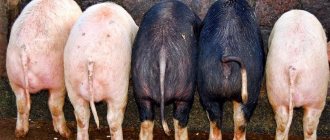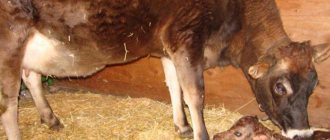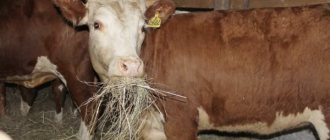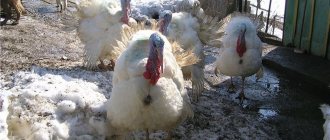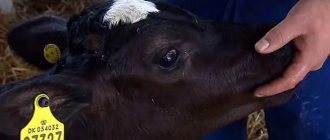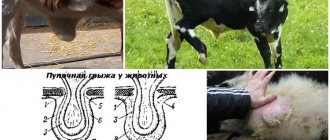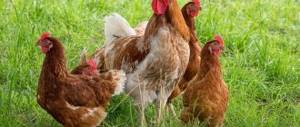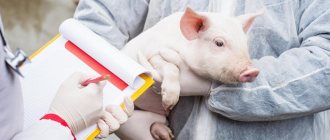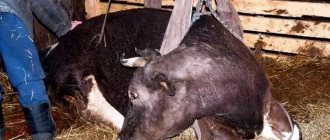How to tell if baby rabbits are starving
In a normal situation, the first feeding of newborns should take place approximately within 24 hours after the female rabbit gives birth, in extreme cases - within 30 hours. After this, the rabbits will feed up to 5 times a day. However, it is quite difficult for the owner to monitor how the babies feed; it is not always possible to catch the very moment of feeding. The fact is that the rabbit needs complete peace and quiet for this.
Important! The mother feeds as many newborns as are currently in the nest; she will not look for the crawled cubs.
So if one of the rabbits accidentally crawls away, he may remain hungry and even die. Accordingly, the owner must create conditions under which newborn rabbits simply cannot crawl out of the nest. And if this does happen, the fugitives need to be brought back.
A mother rabbit can easily feed eight babies (on average). But the offspring may be more numerous, so you need to make sure that everyone gets enough food, including the “mother of the family” herself. Since it is difficult to keep track of the feeding process itself, livestock breeders most often determine whether rabbits are starving by their appearance.
Rabbits
If the animals behave calmly, boast healthy skin and shiny fur, we can conclude that there are no problems with lactation. If newborns don't have enough milk, it will be clear by their angular build, by the fact that their skin will look wrinkled and their fur will be tousled. If feeding cannot be established, the rabbits behave restlessly, begin to squeak and crawl out of the nest.
How does a mother rabbit feed her babies?
A rabbit who has healthy maternal instincts prepares thoroughly for childbirth. To arrange the nest, a few days before the birth, she begins to arrange the nest: she drags straw and hay there, picks up fluff on the chest and in the abdominal area, and puts it all in the designated place. Females tear down the down not only for warm nesting bedding, but also to free up space around the nipples, making it easier for future cubs to access them. The baby rabbit is born blind, helpless and completely naked, so such care is vital for him.
The rabbit's milk begins to be produced immediately after the birthing process is complete, and the first feeding usually occurs at the same time.
Many novice rabbit breeders express concern that the new mother does not sit in the nest around the clock and does not constantly look after the rabbits. This is normal behavior, dictated by the instinct to preserve offspring and protect them from predators. After giving birth, having fed the cubs, in the wild the female tries to immediately move away from them, preferring to monitor the nest from afar. This is explained by the fact that adults smell stronger than newborns, and the mother tries to divert the potential threat from the offspring. At home, these ancient instincts do not disappear anywhere, so the rabbit, who supposedly “abandoned” her babies, actually sincerely cares about them.
The first feeding of babies may also not occur immediately. This is due to the individual characteristics of the rabbit’s body. Milk in some individuals begins to arrive only a few hours after the birth of the rabbits.
But if babies sit hungry for 24 hours, and the mother has stopped feeding them, this is a cause for concern. Perhaps she simply does not have milk or lacks maternal instincts. In these cases, there are two options: either transplant the cubs to another nursing rabbit, or feed them artificially. If there is still milk, and the female is simply a bad (or inexperienced) mother, you can try to use force feeding.
More on the topic: Types of cages for rabbits
Reasons for underfeeding rabbits
The main reasons that newborns do not get enough milk:
- the rabbit does not refuse to feed, but there are problems with lactation or there is too little milk;
- there were too many rabbits in the litter - the female rabbit simply did not have enough milk to feed everyone;
- the female abandoned her cubs.
How many times a day does a mother rabbit feed newborn rabbits?
The most common reason is multiple offspring.
Important! As a rule, a female rabbit gives birth to 4-9 babies on average. But especially fertile ones can have up to 16 cubs. Accordingly, the female is not able to feed such a number of children.
Therefore, if there are more babies than the female has nipples, they are transferred to another nest.
Experienced rabbit breeders organize the mating of several females on the same day. Then the chance that there will be several females with good lactation on the farm at the same time increases significantly. The offspring can be evenly distributed among the animals.
If it’s not a matter of quantity, but the baby rabbits simply don’t get enough milk, then there can only be one option - you need to find out why the rabbit who gave birth does not have milk. To do this, you need to examine the mammary glands, and you may even need to call a veterinarian. It may well be that some kind of pathology is present, or it may be that the animal needs nipple stimulation.
Feeding baby rabbits
Video “Newborn rabbits: feeding, care”
The video talks about keeping a mother rabbit and baby rabbits after giving birth: how to approach rabbits, how to understand that the mother is feeding them, etc.
Featured Articles
A mother rabbit scatters her babies - what to do?
Rabbits have a well-developed maternal instinct, but sometimes the female abandons her offspring. Why does a mother rabbit scatter her babies, find out in the article A mother rabbit eats baby rabbits: reasons for the phenomenon It often happens that a mother rabbit eats her newborn offspring. Why does a mother rabbit eat baby rabbits and what to do about this problem, we will tell you in this article
The female rabbit does not let the rabbit near her - what to do? It happens that the female rabbit does not allow the male to approach her. Why the female rabbit does not allow the rabbit to come near and what the farmer should do in such cases, we will tell you in this article.
Reasons for a female’s refusal to feed her rabbits
The problem with newborn rabbits, or more precisely, with their feeding, may be due to the fact that the female has mastitis, a disease in which an inflammatory process occurs in the tissues of the mammary gland.
Why does a mother rabbit eat her babies?
The fact is that the mammary glands begin to work a little earlier, before the female gives birth. And sometimes, by the time the baby rabbits appear, inflammation occurs. In addition, sometimes mastitis occurs during the feeding process, if for some reason the babies do not suck the milk in full. Most often this happens if the female has brought too few or weakened offspring.
Important! The cause of the development of the inflammatory process can be infectious diseases that occur due to insufficient hygiene and sanitation, underfeeding, and severe hypothermia.
What to do if the mother rabbit abandoned her babies? If this is due to mastitis, then the disease must be treated. The veterinarian explains specific actions and methods of treatment. If mastitis occurs due to congestion, then the mammary glands simply need to be massaged. This is also done in cases where there are no visible injuries, but for some reason the female rabbit experiences discomfort when feeding and abandons her babies.
In general, in this matter, prevention is more important than subsequent treatment. It is very important to provide the rabbit with good conditions. For the female, this means the absence of dampness and drafts, as well as ideal cleanliness in the cage. If the animal does not receive enough nutrients, and at the same time suffers from hypothermia, lactation may freeze and the mother will abandon her cubs.
What to do if you have already eaten
The very fact of eating rabbits is very sad and always worries the owners, but there is no need to panic. Having dealt with the reasons and drawing the appropriate conclusions (eliminating deficiencies in diet and drinking habits, in home arrangement), the problem is usually solved.
Some rabbit breeders believe that a female who eats her newborn rabbits should be culled. But if this happened for the first time, then you should not be so categorical. It's just worth noticing to watch her.
If the eating of offspring continues after the second or third pregnancy, and you cannot find any visible reasons for this, then the conclusion is clear - culling.
How to place baby rabbits with a nurse
If mastitis has gone far, then all that can be done is to place the newborn offspring in another uterus.
What to feed baby rabbits
First, the nurse is taken from her nest, and the fosterlings are transferred, having previously been cleared of the fluff that stuck to them in their native nest. This is done so that the female does not smell someone else's scent.
Attention! Some farmers rub pine needles on their hands to eliminate any foreign odors.
Other people's rabbits are placed in the middle of the nurse's litter and covered with down from this nest. It is important that all children are approximately the same in age. If the “native children” are older, they will be stronger and simply will not let newcomers near the wet nurse.
What to do if the rabbit has no milk
The rabbit does not have milk, what to do in this case - this question interests many novice rabbit breeders.
Sometimes the lack of milk is due to the fact that the female herself receives too little food. Then every newborn baby will also receive less milk, even if the offspring is small. The owner should give the queen specialized feed and provide constant access to drinking water. Industrial feed is difficult to find, but experienced experts say that rabbits can be given feed for calves. It is better not to do it yourself, since it will be more difficult to determine the presence of vitamins. You also need to make sure that a certain amount of salt is present in the mixture.
Baby rabbits
The female should feed well at any time of the year. In summer, it is recommended to give her dried grass; dill or parsley, even carrot tops, will do. These products are known to stimulate lactation and normalize breastfeeding. In winter, she needs juicy root vegetables.
Breast milk is actively produced if the rabbit receives whey or buttermilk. Some experts even advise giving walnuts, but no more than half a kernel per day.
When using supplements to stimulate lactation, you need to start with a minimum dosage and constantly monitor the condition of the uterus and newborn rabbits.
Artificial feeding of baby rabbits
What to do if the mother rabbit still does not feed the babies - of course, take care of this issue yourself. But at the same time you need to prepare for the procedure. You need to make sure your hands don't smell like anything. Change your work clothes, getting rid of any foreign odors.
Important! Sometimes the female rabbit actively interferes with the collection of the cubs. It is difficult to cope with such aggression alone, so you need to enlist the help of a person who will carefully hold the female.
The babies are taken out of the nest, placed in a box and placed under a lamp. For feeding use:
- artificial mixtures produced for feeding kittens;
- goat milk, since it is closest in composition to rabbit milk.
Cow's milk is not recommended. Instead of a pacifier, a syringe without a needle is used for newborn rabbits, and a pipette for slightly older ones. At first, it is not recommended to pour the mixture directly into the mouth; just lubricate the muzzle around it so that the baby licks the product itself. At the same time, it is held vertically. After several such feedings, the baby will get used to the procedure and it will be possible to drip milk directly into the mouth.
Feeding will require patience and time from the owner, but it will be possible to save all the offspring.
0 0 votes
Article rating


